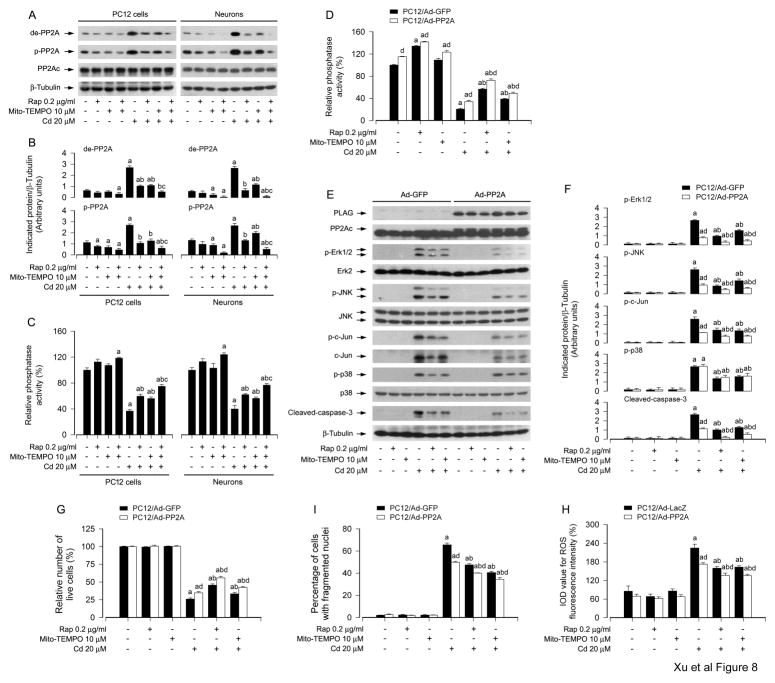Fig. 8.
Rapamycin ameliorates Cd-induced neuronal apoptosis by preventing mitochondrial ROS inactivation of PP2A, thereby suppressing activation of JNK and Erk1/2 pathways. PC12 and primary neurons, or PC12 cells infected with Ad-PP2A or Ad-GFP/Ad-LacZ (as control), respectively, were pretreated with/without rapamycin (0.2 μg/ml) for 48 h and then with/without Mito-TEMPO (10 μM) for 1 h, followed by exposure to Cd (20 μM) for 4 h (for Western blotting) or 24 h (for PP2A phosphatase assay, live cell analysis, DAPI staining, ROS imaging). A and E) Cell lysates were subjected to Western blot analysis using indicated antibodies. The blots were probed for β-tubulin as a loading control. B and F) Similar results were observed in at least three independent experiments, and blots for p-Erk1/2, p-JNK, p-c-Jun, p-p38, and cleaved-caspase-3 were semi-quantified. C and D) PP2A in cell lysates was immunoprecipitated with antibodies to PP2Ac plus protein A/G agarose beads, followed by in vitro phosphatase assay using Ser/Thr Phosphatase Assay Kit 1 (Millipore). G) Live cells were detected by counting viable cells using trypan blue exclusion. I) The percentages of apoptotic cells with fragmented nuclei were quantified by DAPI staining. H) ROS imaging using an oxidant-sensitive probe CM-H2DCFDA was quantified. Results are presented as mean ± SEM (n = 3–5). a p < 0.05, difference with control group; b p < 0.05, difference with 20 μM Cd group; c p < 0.05, difference with Cd/Mito-TEMPO group or Cd/Rapamycin group; d p < 0.05, Ad-PP2A group versus Ad-GFP group or Ad-LacZ group.

